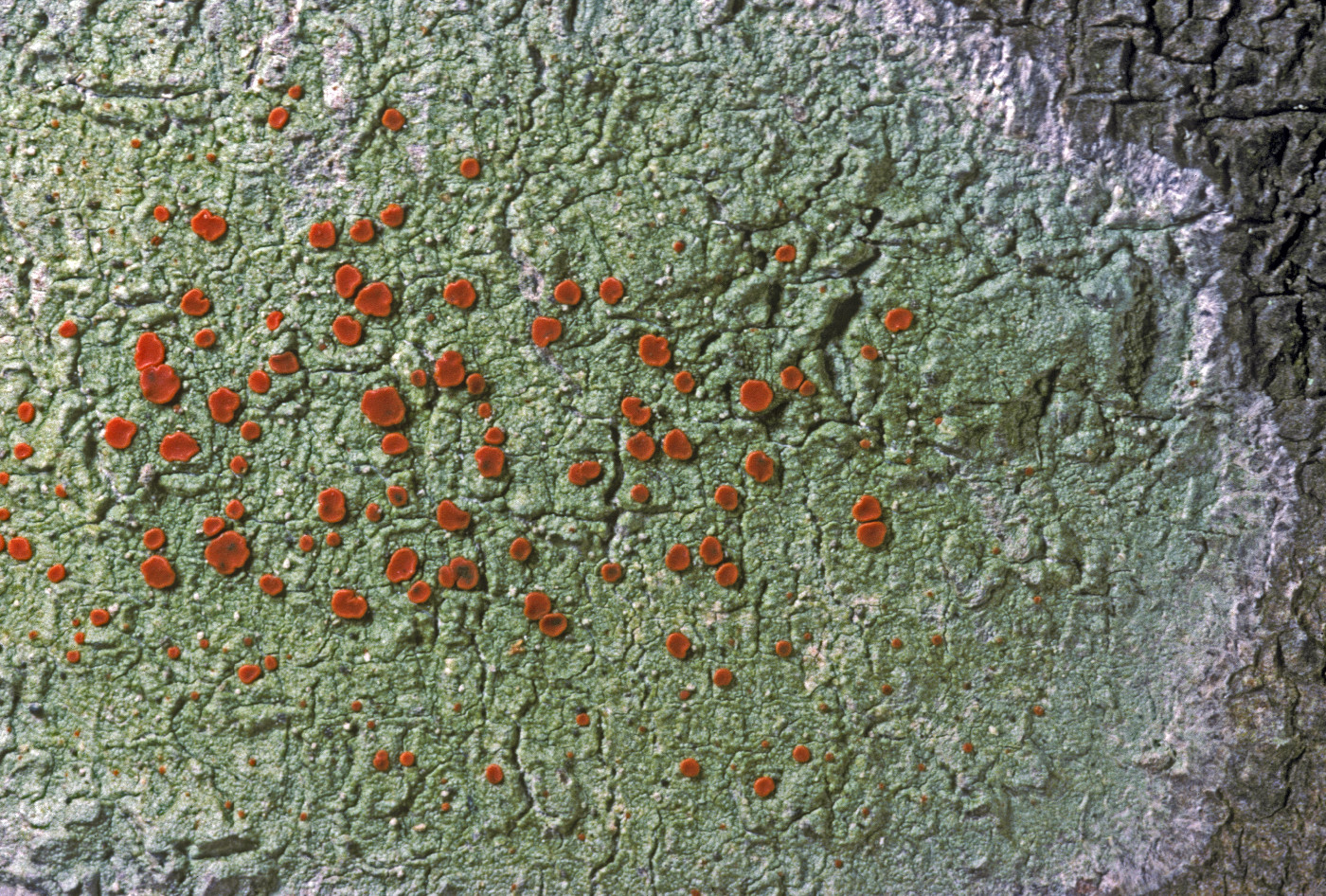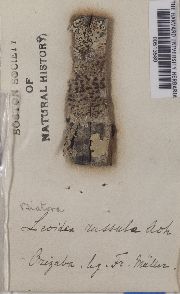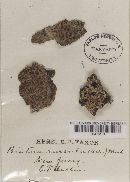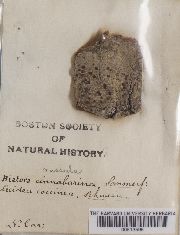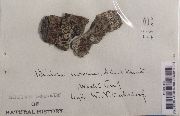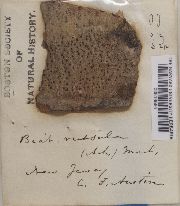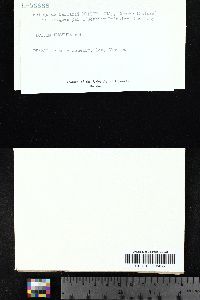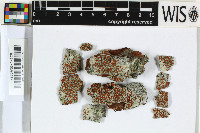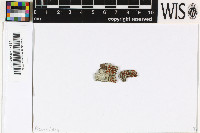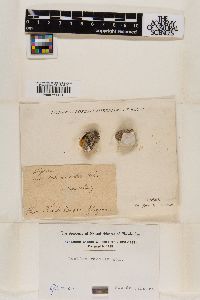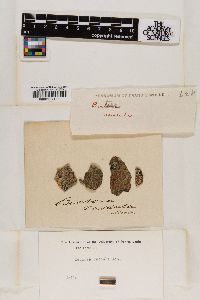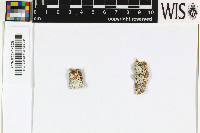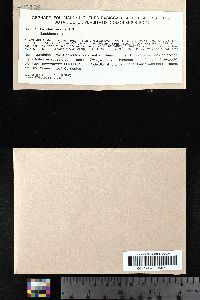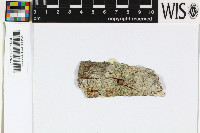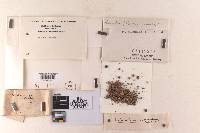
Consortium of Lichen Herbaria
- building a Global Consortium of Bryophytes and Lichens as keystones of cryptobiotic communities -
- Home
- Search
- Images
- Species Checklists
- US States: O-Z >
- US National Parks
- Central America
- South America
- US National Parks
- Southern Subpolar Region
|
|
|
|
Family: Ramboldiaceae
[Biatora russula (Ach.) Mont., moreLecidea russula Ach., Lecidea russula var. russula Ach., Lepadolemma russulum (Ach.) Trevis., Patellaria russula (Ach.) Spreng., Protoblastenia russula (Ach.) Räsänen, Protoblastenia russula var. russula (Ach.) Räsänen, Pyrrhospora russula (Ach.) Hafellner] |
Nash, T.H., Ryan, B.D., Gries, C., Bungartz, F., (eds.) 2004. Lichen Flora of the Greater Sonoran Desert Region. Vol 2. Thallus: crustose, thin (c. 200 µm thick), continuous and rough or areolate, verruculose, up to a few cm wide; prothallus: usually indistinct, sometimes present as a delimiting dark gray to black line when abutting adjacent lichen thalli; areoles: irregular to angular, 0.5-0.7(-1.4) mm wide surface: dark green to greenish ashy to whitish gray or pale cream-colored, esorediate cortex: 25-30 µm thick, lacking an epinecral layer medulla: white, poorly developed; algal layer: c. 50 µm thick; algal cells: 6-13 µm in diam. Apothecia: common, dispersed to crowded, round to irregular, up to 1.5 mm wide disc: bright (to somewhat dull) red or red-orange, slightly concave to plane or convex, shiny, epruinose margin: concolorous with the disc, thin, soon or finally disappearing exciple: outer 10-30 µm red-brown, hyaline internally, c. 100 µm thick laterally, 25-30 µm on lower side, with distinctly radiating, conglutinated hyphae with c. 1 µm thick lumina, epihymenium: red or red-orange, interspersed and covered with fine granules, 5-10 µm thick, K+ red-purple hymenium: +hyaline, 40-50 µm tall; paraphyses: strongly conglutinated even in K, mostly simple, 2-2.5 µm wide (lumina 1-1.5 µm), with tips up to 3 µm wide, without wall pigment; subhymenium: hyaline, 25-50 µm thick, with unoriented hyphae; hypothecium: deep yellow to reddish brown, 35-100 µm thick, sometimes obscured by grayish deposits, inspersed with small oil droplets asci: broadly clavate, c. 35 x 15 µm, 8-spored ascospores: hyaline, simple, oblong-ellipsoid, 8-12 x 3-4 µm Pycnidia: immersed conidia: filiform, curved, 20-25 x 0.8-1 µm Spot tests: thallus K- (rarely K+ yellow then red), C-, KC-, P+ orange or red, UV+ yellow-orange Secondary metabolites: lichexanthone, fumarprotocetraric acid or rarely norstictic acid. Substrate and ecology: on smooth bark or wood of hardwoods, e.g. Quercus coccolobifolia and Q. viminea or on acidic rocks in oak-pine forests World distribution: widespread, in tropical and subtropical areas, including southern North America, Central America, South America Sonoran distribution: Baja California Sur, Chihuahua, Sinaloa, and Sonora at 1250 to 2100 Notes: The taxonomy of the chemotypes and ecotypes in the P. russula group needs further investigation. Material occurring on bark from the Sonoran region is the chemotype with norstictic acid. Material on rock has a much more areolate thallus and has fumarprotocetraric acid. Pyrrhospora russula can be distinguished from weakly sorediate specimens of P. cinnabarina and P. gowardiana by their UV- reaction, as the thalli of those two species do not contain xanthones. Material on rocks resembles somewhat P. sanguinolenta (Kremp.) Rambold & Hafellner, a species known from eastern Australia and southern Africa; however, the thallus of P. russula is whitish gray rather than creamish white as in P. sanguinolenta. Pyrrhospora russula has also been reported on bark and rock from Venezuela (Sipman 1992). |
Powered by Symbiota

